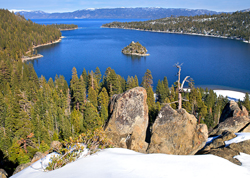A Unique Role
California State Parks is ideally suited to play an important role in the growing effort to combat climate change. The State Park System’s 1.6 million acres are a rich storehouse of biodiversity—an array of terrestrial, freshwater, and marine ecosystems, including many rare habitat types.

The vast majority of state parkland is managed for its natural resource value, and so is relatively undisturbed. Our preservation, protection, and expansion of these wildlands are making it possible for many climate-threatened species to survive.
Besides serving as sanctuaries, state parks may reveal impacts of climate change that are masked elsewhere by human activities. To paraphrase writer Nancy Newhall, our parks may hold answers to questions we have not yet learned to ask.
State parks provide a range of climate-friendly services that Californians are just beginning to appreciate. For example, park ecosystems such as redwood forests store (or “sequester”) great quantities of carbon that might otherwise find its way into the atmosphere.
The greenery and shade of urban state parks (as with Los Angeles State Historic Park, pictured here) can help offset the “heat island” effect that makes cities disproportionately warm.

Want to learn more about the unique role parks can play in studying and combating climate change? Check out our pages on:
Carbon Storage
Urban Parks
Rising Sea Levels
Biological Diversity
Fire
Clean Water
